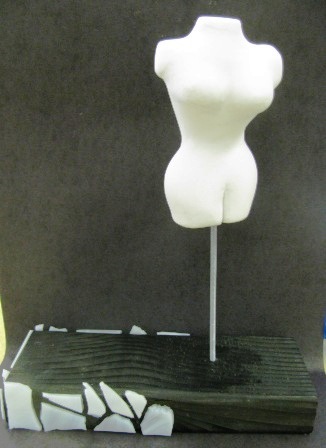

This is all the more true for the marble heads in the exhibition.

Looked at closely, the details in Price's work do almost become abstract sculptures unto themselves. There's something so powerful, dramatic, in that potential, in that space."Īt the Getty Villa, there was a bust of a man wearing a toga whose folds were amazingly rendered – I had the same feeling looking at the folds in the pants of the young man's suit in Price's sculpture. "It's about what you take out, or what do I add in that creates surface rhythm that builds…." Price added that, "I love playing with the levels of detail - where it happens and where it doesn't happen." Negative space, he said, is " so charged for me. To Price, his sculptures are about rhythm. © Thomas J Price Courtesy the artist and Hauser & Wirth Price doesn't really think of himself as a figurative sculptor because he is creating abstract characters and the issues he confronts in making the sculpture, the materials, the details, even the negative space created in the crook of an arm or how a head is poised – all of those are abstractions to Price. Price remarked that his sculptures were installed in the gallery downtown in such a way that the columns there, like those at the Getty Villa, "create the same sense of distance… so you can be confronted by scale." Price was particularly taken by how the Romans were able to use perspective to direct the eyes to certain elements of the reflecting pool and gardens. Who takes up space? Who is valued? What is their worth? Why are some people more valued than others? Who is considered a hero? What does heroic look like – or as the Blackgama fur campaign articulated it long ago: What becomes a legend? And, as Price put it, "What kind of role do Portraits and Sculpture play…What is a monument and what is monumental?" What gives an object, or a person for that matter, status?"Īt the Getty Villa, Price marveled at the building's harmonious architectural proportions, with its columned walkways, interior courtyard and the Wow! factor when one first exits to the garden. So, I just poured myself into it." That work now sits at the far end of the gallery at Hauser & Wirth, an unobtrusive Rosetta stone to the current exhibition, launching the investigations central to “Beyond Measure ,” such as: "I hadn't realized exactly how but at the time I was just instinctively like, that's interesting.
.jpg)
Price recalls the reaction at the time, as "What?" "That's when I realized that I'm seeing the significance that is being missed here," Price told me, and that he needed "to keep working that space." Price realized that because the conceptual space his work was engaging in was not interesting to the art school establishment, it was a space he could inhabit and make his own. What Price ended up showing was a work he called, "Mixed Feelings about Bus Drivers," a very small plaster bust of a head of a Black man, on a plinth of cheap wood fastened to the wall with just one screw, taking up a small fraction of the space allotted him. In 2004, for a student show, Price was given a large wall to exhibit one of his pieces. "That generation had rejected figuration." But to be honest, when I started to work with the figure, it was not cool," he said, laughing.

When I asked Price about his experience at art school, he said: "I had teachers that were very kind to me. He attended the prestigious Chelsea College of Art as well as the Royal College of Art, both in London. As a child, his mother took him often to museums such as the National Gallery and The British Museum where he was enamored of the art and often brought a sketchpad. Portrait of Thomas J Price Photo: Ollie Adegboye © Thomas J Price Courtesy the artist and Hauser & Wirth


 0 kommentar(er)
0 kommentar(er)
